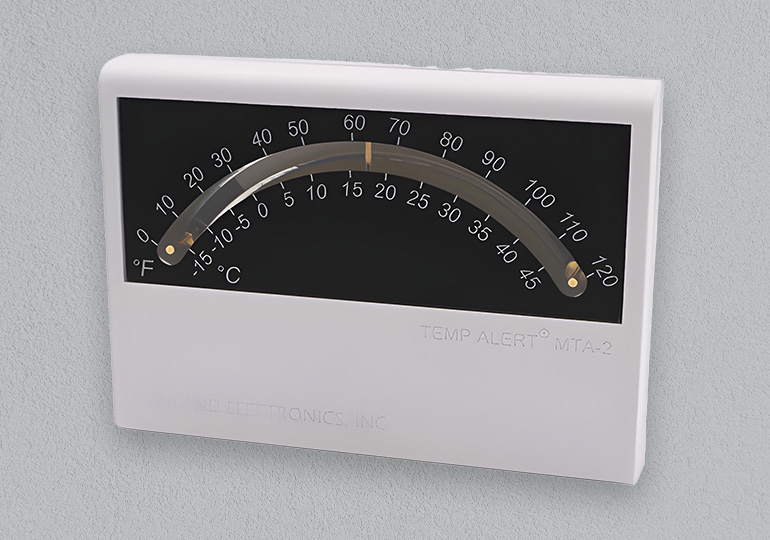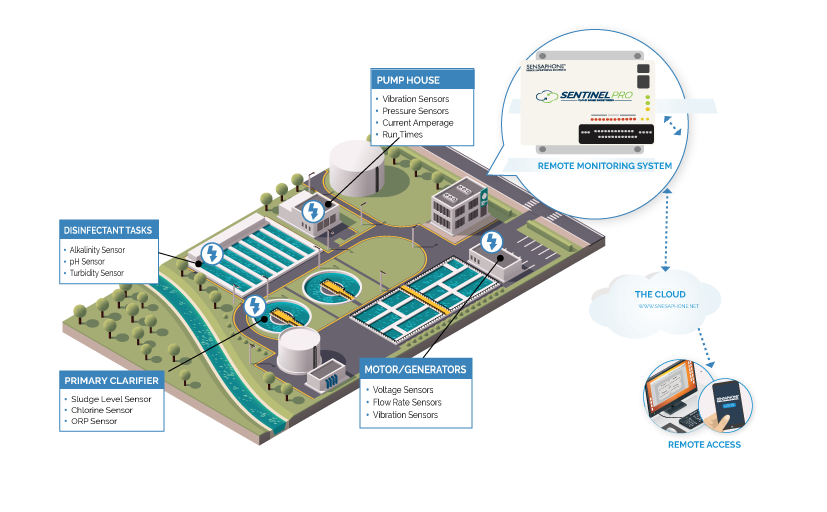
Ambient temperature sensors are crucial for remotely keeping tabs on the temperature conditions inside and outside of workplaces. This is a key part of effective facilities management. It's important to monitor and control these temperatures to maintain a safe and consistent work environment.
Different temperatures are optimal for the performance of both people and equipment. Take, for instance, data centers and server rooms. According to guidelines from ASHRAE, these spaces require cooler temperatures, ranging from 64°F to 81°F (17.8C to 27.2C). This is to ensure that computers, power supplies, and other vital components operate correctly.The Role of Remote Monitoring Systems in Regulating Temperature
Ambient temperatures within a building can vary depending on the season, time of day, and ongoing operations. Over time, areas that become excessively cold or hot can impact employee comfort and the dependability of equipment. Also, abrupt temperature shifts could signify equipment failure or emergency situations.A remote temperature monitoring system is the most economical way to track and manage ambient temperature levels throughout a facility. This is a superior alternative to tasking staff with the regular and sometimes risky job of manually checking temperatures in various parts of a building.
A customized Sensaphone remote monitoring system can supply accurate, current data on ambient temperatures within and outside the building. If temperatures go above or below set limits, the system will trigger an alert. Designated personnel will receive this alert, allowing them to promptly take corrective measures. For example, the image below shows the many sensors that are connected to a remote monitoring system at a water/wastewater facility.

Understanding the Different Types of Ambient Temp Sensors
Ambient temperature sensors are essential elements of remote monitoring systems. They gauge the air temperature and transmit this data to the monitoring systems for analysis and reporting. There are several types of these sensors, such as:• Dry contact switches
• Thermistors
• Thermocouples
• Resistance Temperature Detectors
Choosing the correct sensor for a remote monitoring system depends on the specific application, the environment, and the system configuration. Some devices perform better in sensitive environments, while others are simpler to configure. Let's take a closer look at the differences among these sensors.
The Role of Dry Contact Switches in Ambient Temperature Monitoring
Dry contact switches, like the Sensaphone Temp Alert Temperature Switch, are simple devices that monitor air temperature from 20° to 110° F (6.7° to 43.3° C).
With a user-friendly alarm configuration, operators can establish high or low alarm thresholds simply by adjusting the arms located on the front of the sensor. When integrated into Sensaphone's remote monitoring systems, the dry contact switch triggers an alarm if the surrounding air temperature exceeds or drops below the predetermined limits.
The temperature switch also provides a local display of temperature readings. These sensors require no power, and multiple units can be connected in a series to a single Sensaphone input.
Despite their operating simplicity, might not be the best choice for areas that demand high accuracy because they cannot provide precise temperature readings. While these sensors can identify when temperatures surpass a certain threshold, they can't specify the exact extent of the deviation.
Furthermore, dry contact switches are larger and respond more slowly to temperature changes compared to other sensors; it takes them around 14 minutes to react. They also have a narrower temperature sensing range and a larger margin of error.
The Advantages of Thermistors in Precise Temperature Monitoring
Thermistors are the go-to sensors for crucial applications that require precise temperatures. They're more sensitive than other temperature sensors, allowing them to rapidly pick up minor changes in ambient temperature. Because of their increased sensitivity, they excel in tracking small temperature variations, although their accuracy is most reliable within a narrow temperature range.Inexpensive and compact, thermistors come in two types: NTC (Negative Temperature Coefficient) and PTC (Positive Temperature Coefficient), catering to a wide array of temperature measuring and controlling needs. NTC thermistors decrease resistance as temperature rises, making them ideal for temperature sensing and control applications. On the other hand, PTC thermistors' resistance grows with increasing temperatures, making them suitable for heaters and circuit protection.
When paired with a Sensaphone remote temperature monitoring system, a thermistor keeps a close watch on delicate environments. It quickly supplies data on small temperature fluctuations and sets off an alarm when conditions veer off the preset limits.
Popularity of Thermocouples
Thermocouples are the most common and widely-used temperature sensor, are favored for their versatility, affordability, simplicity, and rapid response to temperature changes. They are known for cost-effectively measuring extensive temperature ranges from -200°C to +2500°C, depending on their metal wire framework.A thermocouple is made up of two wire leads of different metals. When these wires are welded together, they create a temperature-sensing junction that generates a thermocouple voltage. By combining various metals, thermocouples can operate within different temperature ranges and accuracies in diverse environments. The Type K thermocouple, made of Chromel® and Alumel®, is especially popular due to its broad measurement range and average accuracy of about +5°F.
Thermocouples can be integrated into remote monitoring systems, but might require an extension wire to minimize error or terminal blocks to connect the wiring. If you need to extend the wire more than 100 feet, an inexpensive temperature transmitter can convert the thermocouple signal for more reliable transmission.
RTDs: Monitoring a wider Temperature Range
Resistance temperature detectors (RTDs) provide a wider temperature range that make an RTD applicable in more extreme temperature ranges. RTD sensors operate by tracking changes in a metal wire's resistance as the temperature varies. The sensor includes measurement circuitry which passes along a 4-20mA signal to the remote monitoring device. The wire length and connection quality can play a role in accuracy in some cases.RTDs are the preferred choice for applications that demand high accuracy and long-term stability. You'll often find them used in HVAC systems, including air handling units and chillers, which play a crucial role in regulating building temperatures. The sensors are often sold with longer probes that can be inserted into extreme environments such as an oven or liquid nitrogen tank without damaging the sensor’s wire.
Alarm Triggers in Ambient Temp Sensors: A Safety Essential
Ambient temperature sensors can trigger alarms in remote monitoring systems when when temperatures deviate from established thresholds. These alerts can point out temperature changes due to environmental or weather factors, equipment breakdowns, or hazardous scenarios that could endanger property or staff.Immediate alerts enable a swift emergency response, which can help to mitigate or even prevent the damages and downtime that unusual temperatures might cause.
Choosing the Best Ambient Temp Sensor for Your Facility
So, are all these temperature sensors interchangeable? The short answer is: no. The best sensor for your facility depends on you’re your specific needs and the environment.For less critical applications, a temperature switch, which is easy to set up, will suffice. However, for more delicate applications that require accurate readings, data recording, and reporting capabilities, a thermistor would be a more suitable choice.
Still have questions about which ambient temp sensor is best for your application? Need assistance setting up your system? Send a request to our team at Contact Sales Team | Sensaphone.
For more information, read 5 Questions for Buying a Wireless Temperature Monitoring System.







